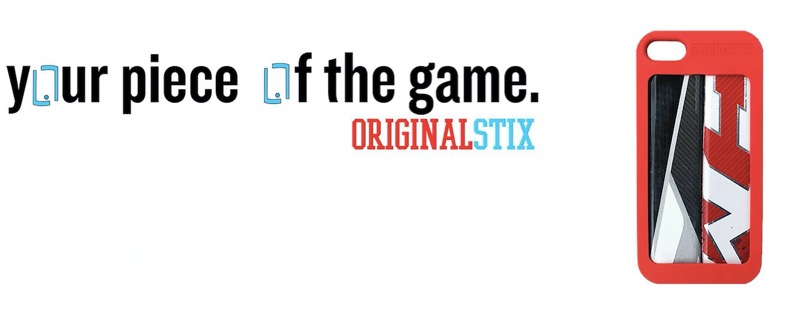Your Piece of the Game
"The sports industry's growing embrace of energy efficiency, renewable energy, recycling, water conservation, safer chemicals and healthier food is educating millions of fans about the importance of protecting the environment and natural resources on which we all depend. Through their leadership on the field, court, or rink, professional and collegiate sports - and their sponsors - are showing their many fans practical, cost-effective solutions to some of our planet's most ecological issues."
- Natural Resources Defense Council.
At the forefront of the green sports movement is a sport whose future tremendously depends on the preservation of our ice. Hockey.A recent interview with Washington Capitals captain, Alex Ovechkin, reveals that a professional hockey player uses approximately 242 sticks in the regular season.Q. – How many sticks did you break last year?A. – I use three sticks every game, so it’s about two hundred. Two hundred broken sticks. Imagine how much money the NHL spends on me!
Hockey.A recent interview with Washington Capitals captain, Alex Ovechkin, reveals that a professional hockey player uses approximately 242 sticks in the regular season.Q. – How many sticks did you break last year?A. – I use three sticks every game, so it’s about two hundred. Two hundred broken sticks. Imagine how much money the NHL spends on me!
Seeking to alleviate the environmental impact from the thousands of broken hockey sticks that are thrown into our landfills, and simultaneously fill a gap caused by the over-commoditization of phone cases that are "mass produced and all look the same", former hockey player Terry Johnson architected a novel company that shows promising signs of success: Original Stix.
 Original Stix has partnered with dozens of professional and college hockey teams to repurpose pieces of broken hockey sticks that would otherwise be waste - and manufacture the broken sticks into unique phone cases.The teams, says Terry, are often quite happy to get the broken sticks off their hands, as some teams are inflicted with thousands of dollars in disposal fees. Today's hockey sticks are primarily made of a lightweight graphite material woven from carbon. Professional hockey players use custom-made graphite sticks, architected to precise specifications per the player. A hard foam wrapped in graphite is the core of the hockey stick, existing to absorb the impact of the puck.In the Fall of 2015, Original Stix, in a partnership with The Hoot Case, received recognition that the company could manufacture and produce NHL licensed phone cases. Using a current partnership with fatheads, the company has made efforts to provide team logos on cases to offer the customization for hockey enthusiasts across the nation.The company has shipped approximately 10,000 phone cases since its origination in 2014.
Original Stix has partnered with dozens of professional and college hockey teams to repurpose pieces of broken hockey sticks that would otherwise be waste - and manufacture the broken sticks into unique phone cases.The teams, says Terry, are often quite happy to get the broken sticks off their hands, as some teams are inflicted with thousands of dollars in disposal fees. Today's hockey sticks are primarily made of a lightweight graphite material woven from carbon. Professional hockey players use custom-made graphite sticks, architected to precise specifications per the player. A hard foam wrapped in graphite is the core of the hockey stick, existing to absorb the impact of the puck.In the Fall of 2015, Original Stix, in a partnership with The Hoot Case, received recognition that the company could manufacture and produce NHL licensed phone cases. Using a current partnership with fatheads, the company has made efforts to provide team logos on cases to offer the customization for hockey enthusiasts across the nation.The company has shipped approximately 10,000 phone cases since its origination in 2014.
[youtube https://www.youtube.com/watch?v=i6c8B4sCtQg&w=560&h=315]
Intrigued by the concept, I conducted an interview with Co-Founder and friend, Mike Dremluk, seeking to learn more: TSI: What was the motivation behind the inauguration of Original Stix?MD: Original Stix, with emphasis from the Original Six teams of the NHL, was an opportunity to repurpose, recycle, and reuse equipment typically left for landfills. Our value proposition met the inflection point of sustainability and customization. Given the ever-changing landscape of the cell phone industry, this was an untapped market within a broader niche to be able to cater to a market while providing an opportunity to recycle manufactured goods for the sport as a whole. Furthermore, the average person handles their phone over 100 times a day and [the cell phone] is universally known as a common good people have these days.TSI: I recently bought a Boston Bruins Original Stix cell phone case. $51.48 including $4.49 in shipping. This is not the most expensive I have seen, but certainly can not be considered "low-cost". Any plans to drive this cost down? Why or why not?Dremluk: Given the birth and manufacturing of Detroit, we are an atypical phone case accessory company that is American-made. As such, our manufacturing costs are higher than your typical phone case company. Yet, our goal is to not only provide a resource for repurposing goods, but also to support American labor, specifically in Detroit.TSI: Makes sense. Why Detroit?Dremluk: We are standing at the precipice of tremendous change in a historic city and we couldn't find a better way to manufacture our products within the continued path of reuse, recycling, and re-birth of the city. What is truly unique about the city at large is the community aspect and dedication each member makes and we couldn't thank the city enough for supporting our cause and helping us grow. Also, hockey is extremely popular in the Midwest/Northeast U.S.A...not to mention the ability for people to travel by tunnel/bridge from Detroit to Canada, where hockey is deeply valued.TSI: You've been in business for a couple years now. What have you learned and what are you now doing differently?Dremluk: One of the greatest takeaways from being an entrepreneur is the professional maturity you develop and the sense of ownership. Whereas most jobs these days have training or senior members to evaluate your progress, each member has ownership over tasks (finance, accounting, business development, operations, etc.) that enforce a branded loyalty within the team. There is an overarching sense of accountability which allows members to find intrinsic motivation to see the brand succeed. Recently, we have been able to find the core strengths within the team that allow us to coordinate efforts more effectively.TSI: In considering the net-net impact of your company - you are taking hockey sticks and repurposing them into phone cases...which is fantastic. But how much energy is the company using in order to ship these phones all over the world? How much energy does it take to produce a phone case with the hockey sticks? Has Original Stix completed a robust carbon footprint analysis yet?Dremluk: To give you a quick summary, we have been able to coordinate efforts with a fulfillment center that helps us manufacture, package, and distribute to a variety of our customers. But, more importantly, we use Detroit's manufacturing expertise and engineers to develop steel/aluminum molds with the ability to repurpose and adapt the designs to the cell phone industry, which limits our disposal of products and waste.
TSI: What was the motivation behind the inauguration of Original Stix?MD: Original Stix, with emphasis from the Original Six teams of the NHL, was an opportunity to repurpose, recycle, and reuse equipment typically left for landfills. Our value proposition met the inflection point of sustainability and customization. Given the ever-changing landscape of the cell phone industry, this was an untapped market within a broader niche to be able to cater to a market while providing an opportunity to recycle manufactured goods for the sport as a whole. Furthermore, the average person handles their phone over 100 times a day and [the cell phone] is universally known as a common good people have these days.TSI: I recently bought a Boston Bruins Original Stix cell phone case. $51.48 including $4.49 in shipping. This is not the most expensive I have seen, but certainly can not be considered "low-cost". Any plans to drive this cost down? Why or why not?Dremluk: Given the birth and manufacturing of Detroit, we are an atypical phone case accessory company that is American-made. As such, our manufacturing costs are higher than your typical phone case company. Yet, our goal is to not only provide a resource for repurposing goods, but also to support American labor, specifically in Detroit.TSI: Makes sense. Why Detroit?Dremluk: We are standing at the precipice of tremendous change in a historic city and we couldn't find a better way to manufacture our products within the continued path of reuse, recycling, and re-birth of the city. What is truly unique about the city at large is the community aspect and dedication each member makes and we couldn't thank the city enough for supporting our cause and helping us grow. Also, hockey is extremely popular in the Midwest/Northeast U.S.A...not to mention the ability for people to travel by tunnel/bridge from Detroit to Canada, where hockey is deeply valued.TSI: You've been in business for a couple years now. What have you learned and what are you now doing differently?Dremluk: One of the greatest takeaways from being an entrepreneur is the professional maturity you develop and the sense of ownership. Whereas most jobs these days have training or senior members to evaluate your progress, each member has ownership over tasks (finance, accounting, business development, operations, etc.) that enforce a branded loyalty within the team. There is an overarching sense of accountability which allows members to find intrinsic motivation to see the brand succeed. Recently, we have been able to find the core strengths within the team that allow us to coordinate efforts more effectively.TSI: In considering the net-net impact of your company - you are taking hockey sticks and repurposing them into phone cases...which is fantastic. But how much energy is the company using in order to ship these phones all over the world? How much energy does it take to produce a phone case with the hockey sticks? Has Original Stix completed a robust carbon footprint analysis yet?Dremluk: To give you a quick summary, we have been able to coordinate efforts with a fulfillment center that helps us manufacture, package, and distribute to a variety of our customers. But, more importantly, we use Detroit's manufacturing expertise and engineers to develop steel/aluminum molds with the ability to repurpose and adapt the designs to the cell phone industry, which limits our disposal of products and waste.
[youtube https://www.youtube.com/watch?v=p5Jv87McXyg&w=560&h=315]
TRASH TO TREASURE:In a world with increasingly finite resources, the concept of repurposing is of utmost importance. Repurposing old materials and creating entirely novel products from waste components can be extremely time and capital intensive particularly in the short-term, which can be a deterrent to managers and shareholders focused on the bottom line. Commonplace myopic behavior often has resulted in risk-averse actions on behalf of corporate executives, unwilling to risk short-term profitability. As such, we see a lack of much-needed repurposing of goods. Thus, companies like Original Stix, whose entire business model is centered around repurposing, will serve to be vastly important as the world seeks to mitigate the increasingly catastrophic effect of greenhouse gas emissions.
Thus, companies like Original Stix, whose entire business model is centered around repurposing, will serve to be vastly important as the world seeks to mitigate the increasingly catastrophic effect of greenhouse gas emissions.

